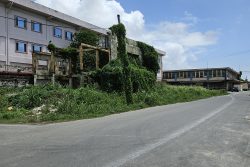CARIBBEAN ECONOMIC RECESSIONS IN HISTORICAL PERSPECTIVE
ADDRESS by PROFESSOR COMPTON BOURNE, PH.D, O.E.
PRESIDENT CARIBBEAN DEVELOPMENT BANK
THE THIRTEENTH SIR ARTHUR LEWIS MEMORIAL LECTURE AT THE NINETEENTH ANNUAL COMMERCIAL BANKS CONFERENCE
ST. KITTS-NEVIS
NOVEMBER 5-7, 2008
INTRODUCTION
I am delighted to be here among you tonight in the splendid environment and beautiful St. Kitts, tonight’s inclement weather notwiths tanding.
I must thank Sir Dwight for his flatteringly enthusiastic introduction of me. We have a tradition going back several decades of saying nice things about each other.
It is a special pleasure to be here on the occasion of the Twenty-Fifth Anniversary of the Eastern Caribbean Central Bank (ECCB). It is with pride as a member of the Caribbean family that I have observed the growth of the ECCB into arguably the institution for Economic Management and Leadership in the Caribbean.
I say arguably in order to ensure my safe re-entry into that other great Caribbean institution of which I am President.
I am truly honoured by the invitation of the ECCB to deliver the Thirteenth Sir Arthur Lewis Memorial Lecture. Sir Arthur, Nobel prize winner for Economics in 1979 was an extremely gifted intellectual with an astounding history of achievement. He pioneered the field of development economics in which his contributions as scholar, policy adviser and practitioner are of enduring value. He also made major contributions to the study of industrial economics and economic history. Principally, he employed economic theory and economic history to elucidate issues in economic development and to provide insights into contemporary problems and their solutions. It is in this tradition that I present my Lecture.
I have chosen the topic of “Caribbean Economic Recession in Historical Perspective”.

Any citizen of the world would know of the tremendous upheaval currently taking place in the global economy, stemming in its most immediate moment from the financial crisis in the USA and Europe but preceded by the inflation of world prices for food, raw materials and petroleum.
There is elevated concern in Caribbean policy circles, as well as among men and women on the street, about the prospects of prolonged and deep economic recession in Europe and the US and its implications for the Caribbean. In this Lecture, I engage in such a discussion within the context of the historical record of economic recessions in the Caribbean over a very long period of time, i.e. 1900-2004, but with a focus on two early episodes that is 1929-33 (the Great Depression) and 1938-1940 as well as on the modern, post- independence period starting in the 1960s.
STATISTICAL PROFILE OF ECONOMIC RECESSIONS
An economic recession may be defined as a period of negative growth of aggregate income or economic activity lasting one or more years. For most Caribbean countries, aggregate output or income data are only available for the post-1960 period. Therefore for the earlier years, I employ per capita exports as the indicator. The data for the 1900-1959 period are taken from Bulmer-Thomas’ essay “The Wider Caribbean in the 20th Century: A Long-Run Development Perspective” published in 2001.
The Commonwealth Caribbean has a history of economic recessions. Between 1900 and 2004, there were between 24 and 37 recessions for 9 of the 12 countries represented in Table 1. Because the data are incomplete for Antigua and Barbuda, Dominica and Grenada, there is most likely an under-estimation of the number of economic recessions in their cases. It is noteworthy that the frequency of economic recessions is lower among the OECS countries (except St. Vincent and the Grenadines) than among the others. In some 20-year sub-periods, a few countries have very high frequencies. Bahamas has ten between 1921-40, Barbados 12 between 1941-60 and Guyana 13 between 1921-40. Among the OECS, St. Kitts-Nevis has 12 between 1921-40 and St. Vincent and the Grenadines 13 between 1941-60. The economies seem to have become more robust i.e. less prone to economic downturns after 1970. There has been a distinct tendency for the number of recessions to decrease after 1940. Whereas there were 71 recessions in 1900-20 and 91 in 1921-40, the number dropped to 65 in 1941-60, 54 in 1961-80 and 45 in 1981-2000. Fluctuations in economic growth are a normal part of economic life. However, recessions portend absolute failure – not simply failure to grow as rapidly as before but a turn for the worse. In such circumstances, attention is naturally focused on the length and depth of the recession and on the time taken for full recovery. Economic recessions in the Commonwealth Caribbean were typically of short duration before 1960 (Tables 2 and 3). Of the 46 recorded recessions in 1900-20, 27 lasted one year, 14 lasted two years and five lasted three or more years.
For the 1921-40 sub-period in which there were 44 recessions, 21 lasted one year, 10 lasted two years and one lasted three or more years. In the 1941-60 period, 31 of the 44 recessions were of one-year duration, 9 of two years and 1 of three or more years long. The balance shifted after 1960. Of the 22 recessions in 1961-80, nine were of one year duration, four of two years, and nine of three or more years. In the next sub-period i.e. 1981-2000, there were 17 recessions of which six lasted one year, three lasted two years and eight lasted three or more years.
Furthermore, some of the extended recessions in the later sub-periods were very long. The Guyana economy was in recession from 1982-1985; the Jamaican economy from 1973-1980, theTrinidad and Tobago economy from 1985-1989, the St. Vincent and the Grenadines economy from 1974-1977 and the Antigua and Barbuda economy from 1973-1976. The only common episodes of extended recession are 1928-33, 1938-40 and 1974-76, all three of which will be discussed later.
The extended recessions, i.e. three years or more, were deep recessions in the sense that there was a steep fall from the previous peak level of aggregate economic activity to the lowest point (the “trough”) of the cycle. All Commonwealth Caribbean countries experienced deep recessions in 1928-33, with per capita exports (the proxy for GDP) falling between 37% and 71% (Table 4). The next common episode was 1938-40 when per capita exports decreased between 24% and 74%, except in Guyana (16%) and St. Vincent and the Grenadines (5%). Guyana (1962-64), St. Kitts-Nevis (1968-71) and St. Vincent and the Grenadines (1968-70) were the only three countries where economic activity fell substantially in 1960s by 14%, 13% and 10% respectively. The situation in the 1970s was far worse. Every country, except oil-exporting Trinidad and Tobago, experienced sharp falls in real GDP. The most severely affected were the Bahamas where per capita GDP fell by 32%, Jamaica 31%, St. Vincent and the Grenadines 27%, Dominica 23%, Grenada 20% and Antigua and Barbuda 19%. Guyana, St. Kitts-Nevis and Barbados experienced smaller declines of 8%, 7% and 5% respectively. The deep recessions during the 1980s were in Guyana (25% between 1982-85), Trinidad and Tobago (19% between1985-89) and St. Lucia (12% in 1976). During the 1990s, Trinidad and Tobago experienced another deep recession of 14% between 1992-93 as did Barbados whose per capita real GDP fell by 14% between 1990-92.
The historical evidence for the Commonwealth Caribbean is that the length of recovery from deep recessions can be many years. Measuring the length of recovery by the number of years to return to the per capita income at the downturn, it took anywhere between four to eight years during the 1928-33 recession and five to nine years during the 1938-40 recession (Table 5). Jamaica took more than 26 years from the 1970s into the 1980s. Trinidad and Tobago took more than 16 years to re-establish the per capita income level reached in 1984, Guyana 11 years for the 1981 income level and St. Vincent and the Grenadines 11 years for the 1973 income level. Economic descent can be swift and painful; economic ascent is painfully slow.
EXPLAINING CARIBBEAN ECONOMIC RECESSIONS
Many factors help to explain the course of aggregate economic activity in the Commonwealth Caribbean. They include external economic variables such as aggregate income and demand in the major trading partner economies, financial capital flows, domestic fiscal policy and natural hazard events. The relative importance of the individual variables changes from time to time.
The behaviour of the US and UK economies is a chronic influence. There is a strong correlation between the US GDP growth rate and the GDP growth rate of Commonwealth Caribbean countries. In earlier times, it was the UK GDP growth rate which probably mattered most. During the colonial period, UK import demand for tropical products determined the export performance of Caribbean economies and UK fiscal subventions were an important componentof fiscal revenues. The significance of the external influence is clear during the period of the Great Depression when US GDP contracted by 30% between 1929 and 1933 and UK GDPcontracted by 6% between 1929 and 1931. W. Arthur Lewis in “World Production, Prices and Trade, 1870-1960” published in 1952 showed major declines in the prices of selected tropical products. The price index for food decreased continuously from 144 in 1928 to 54 in 1935. The decrease for primary products was from 132 to 49.8 while for raw materials it was from 124 to 47. The terms of trade also turned against exporters of good, primary products and raw materials in the order of 26%-32%. As I noted previously, per capita exports from the Commonwealth Caribbean decreased substantially and for a lengthy period in response to this external shock.
Figures 1 to 5 further illustrate the course of exports per capita during this recession episode. The trade shock was compounded by the inability of the countries to sustain public revenues. Figures 6 to 8 illustrate the trends Public revenues per capita fell 53%-57% in the Bahamas, Guyana and Trinidad and Tobago, 45% in Belize, 36% in Jamaica, 28% in Barbados and 23% in Grenada. It took anywhere between three to eight years for per capita public revenues to recover to the previous peak level. Lacking the fiscal capacity to engage in contracyclical policy, the Commonwealth Caribbean colonies could only be passive in the face of this tremendous global economic shock.
The experience in 1938-40 was broadly similar. Again, exports per capita fell greatly and recovery was protracted. As noted previously and shown in figures 1-3, the decrease in per capita exports ranged between 32% and 74%, the contraction being greater in the Bahamas, Jamaica, Antigua and Barbuda, and Trinidad and Tobago. Outside of this range, per capita exports decreased by 16% in Guyana and 24% in Belize and Barbados. Belize, Guyana and St.Kitts and Nevis took three years to recover. The Bahamas, Barbados and Grenada took 4 to 5 years. For Jamaica, Trinidad and Tobago and Antigua and Barbuda the recovery period extended 7 to 8 years. Revenues per capita had recovered from the Great Depression somewhat in the 1935-37 period in Barbados, Trinidad and Tobago, St. Vincent and the Grenadines and Jamaica. There was a further deterioration in public revenues in Belize between 1935 and 1937 and in Grenada in 1935 and 1936.
Guyana experienced decreases in 1934 and 1935 and increases in 1936 and 1937. Experiences with public revenues were also revised in 1938-40. Five countries witnessed decreases in their public revenues per capita, namely Barbados, Belize, St. Lucia, St. Vincent and the Grenadines and Trinidad and Tobago. Four countries experienced increases, namely, Antigua and Barbuda, Dominica, Grenada and St. Kitts and Nevis. Coming after the economic travails of the Great Depression, the downswing of the late 1930s aggravated social and economic conditions of the Commonwealth Caribbean countries to such an extent that W. Arthur Lewis could say that there could not have been “many places in the world which touch the depths of West Indian poverty or show so little progress”. By 1938, riots broke out in Jamaica and ushered in the Moyne Commission whose report recommended several measures for economic development of the region.
A more complex set of factors can be adduced in explanation of economic recessions in the post-independence period. US economic growth continued to be influential but was less decisive as evidenced by recession episodes contemporaneous with US economic growth and by Caribbean economic growth during US economic downturns (Figures 9-13). Trade shocks remained very important. A strong correlation persisted between the terms of trade and export performance, exports generally rising when the terms of trade improved and falling when the terms of trade deteriorated (Figures 14-19). The link between the terms of trade and exports carried over to aggregate income. Trade, specifically world petroleum prices, caused a massive deterioration in the terms of trade of oil importers in the mid-1970s, modified in part only by a brief rise in world prices for sugar. World prices for crude petroleum (West Texas Intermediate) rose from $4 per barrel in August 1973 to $10 in January 1974 and increased even more steeply to peak at $38 per barrel in January 1981. This unprecedented rise in petroleum prices set in train cost-push inflation which undermined export competitiveness and in some countries also led to foreign exchange rationing which reduced production capacity.
Stagflation (as it came to be known) while initially moderated by access to foreign debt was subsequently intensified by the fiscal drag of debt service and amortization. While commercial debt does not have the volatility of short-term portfolio capital inflows, the shortterm to maturity on such debt makes them unreliable instruments of contra-cyclical policy.
Payment of principal may become due before per capita incomes have recovered sufficiently and in such instances may further depress aggregate income. A debt burden element was very much present also in the Dominica economic recession of 2001-2002.
In 1982, world petroleum prices began to decrease, falling by mid-1986 to $8 per barrel i.e. to a level less than one quarter of the previous peak. For Trinidad and Tobago, this was calamitous. The economy was stuck with import price inflation derived from manufactured goods imports and a much weaker domestic goods (non-tradables) sector in the face of a sharp fall in its commodity terms of trade and of exports in current prices. The result was an economic recession of major proportions, both in terms of magnitude and duration.
Service exports, rather than commodity exports, seem to be more cogent explanations of the Barbados economic recession in 1990-92 and 1994-95 and of the Bahamas economic recession in the same period. In each country, there is little correlation between the decrease in per capita GDP and the behavior of commodity exports. However, there is correlation between negative GDP growth and tourism exports measured by the annual number of tourist arrivals and visitor expenditures. In the Bahamas, tourist arrivals decreased by 11% between 1989 and 1992 while visitor expenditures decreased by 10% in 1991 and rose by 4% in 1992. For Barbados, the decrease in tourist arrivals was 16% between 1989 and 1992 while the decrease in visitor expenditures was 8%.
It might be thought that official aid flows might counter recessionary impulses. Studies of developing countries such as those by Pallage and Robe (2001) and Bulir and Hamann (2001) led to the conclusion that foreign aid is procyclical. However, official bilateral capital inflows have been of little significance in the Commonwealth Caribbean either in terms of their reduction precipitating economic recessions or in terms of increased inflows averting or reversing them.
As I have documented in a paper presented on the occasion of the 50th Anniversary of the Planning Institute of Jamaica (Bourne 2007), disbursements since 1982 have been too small to matter, except in the case of Jamaica where disbursements of bilateral concessional debt averaged $127 million annually in 1982-85, decreasing to $112 million in 1985, averaged only $54 million in 1986-89, and then increased to $132 million in 1990-91. For the other countries, as well as for Jamaica subsequent to 1991, bilateral debt disbursements were typically between $0.5 million and $5 million annually. Disbursements of multilateral concessional debt have also been generally quite small – less than $10 million, except in Guyana for most years in the 1989- 2000 period, Jamaica with $15 million in 2000, Barbados with $15 million in 1996 and $19million in 1998, and St. Lucia with $11 million in 1992. Domestic factors played a role in the post-independence recessions. Fiscal and debt policy are among the more important ones. In Barbados, for instance, the Central Government had an average annual fiscal deficit of $24 million between 1976/77 and 1979/80. In the next five years, it averaged $59 million, growing still further to $78 million in 1986/87-1990/91. The ratio of the overall deficit to GDP rose from 2% in 1989 to 10% in 1990 and 11% in 1991. This is a tale of unsustainable fiscal expansion which was to repeat itself in a few other countries later in that decade and early in the following one. Barbadian fiscal deficits were financed by foreign commercial debt. Debt from foreign commercial banks rose steeply from $47 million in 1984 to $146 million in 1990. Foreign bonds outstanding increased from $20 million in 1984 to $107 million in 1989. As consequence, amortization began to loom large in 1989/90, amounting to $62 million in that year and rising to $88 million in 1991/92.
It has become a truism that natural hazard events, notably hurricanes and tropical storms, reduce economic growth at least in the year of their occurrence. However, the impact may notalways be sufficient to push economies into recession zones. For the period 1973-2004, there are only six instances of pairwise simultaneity of economic recession and hurricanes and tropical storms in the OECS countries. They are: Antigua and Barbuda in 1995, Dominica in 1977, 1989 and 2001, and Grenada in 1975 and 2004. In the case of Jamaica, there are six pairwise occurrences in the 1973-2004 period, viz. 1973, 1977, 1979, 1980, 1985 and 1986. Jamaican economic recessions would seem to be more linked to natural hazard events.
THE GLOBAL CRISIS OF 2008 AND ITS IMPLICATIONS
Much has been written and said about the current evolving global economic and financial crisis, acutely manifested in the US and Europe. Toxic sub-prime mortgage loans in the US endangered banks and non-bank financial intermediaries resulting in cumulative credit losses and write-downs close to $1 trillion by the middle of October 2008. In the US, assets of failed financial institutions comprised about 40% of GDP in September 2008. Confidence in interbank transactions evaporated as did bank liquidity so much so that leading corporate enterprises cannot issue commercial paper and many other businesses as well as individuals have greatly reduced access to credit. Stock markets have oscillated wildly. The Federal government has had to undertake a massive and unusual injection of financial capital in banks, specialized mortgage finance institutions and investment firms. In fourth quarter 2008, the US economy officially went into recession.
The crisis in the US engulfed countries in Europe and Asia with similar outcomes of collapsing financial institutions, runs on bank deposits, freezing of commercial and consumer credit, wide swings in stock prices on the major exchanges and government capital injections and guarantees to stabilize banks and other financial institutions. Commodity prices which caused consternation by substantial sustained increases between January 2007 and April 2008 have begun a sharp downturn. Even petroleum prices have trended sharply downwards since July 2008. The price for West Texas Intermediate, having risen from $54 per barrel in January 2007, rose to $94 per barrel by November 2007, peaking at $134 per barrel in August 2008. Price fell thereafter to reach $77 per barrel in October 2008.
Discussions about possible implications for the Commonwealth Caribbean have focused on issues such as international exposure of resident financial institutions, effects on demand for exports of goods and services, access to international finance and migrant remittances. The widespread belief is that the asset portfolios of Caribbean resident financial institutions are sufficiently delinked from the foreign financial institutions by regulations to effectively insulate them from the global financial meltdown. This position is probably valid. However, it is not certain that the same degree of assurance can be given for mutual funds whose portfolios contain substantial amounts of foreign equities. This may be a potential area of aggravated risk for private investors. On the borrowing side, international capital markets have hardened. Lenders have become more risk averse as reflected in wider spreads or higher risk premia on sovereign debt. Inflows of direct investment capital may also diminish because of corporate liquidity problems and heightened economic uncertainty in the source countries.
With respect to export demand for commodities, the historical experience discussed previously would suggest that a deep economic recession in the US and Europe would weaken demand for the Caribbean’s primary products and turn the terms of trade adversely. There is less certainty about likely effects on demand for tourism services. The strong upward trend in tourist arrivals in most countries pre-1992, despite sizeable fluctuations in US and UK GDP growth, is suggestive of invariance of Caribbean tourism service exports to economic fluctuations in those two economies until then (Figures 20-24). It is noticeable, moreover, that the stock market crash 1987 did not depress tour ism demand. However, there might be a new dynamic at work after 1992. A positive correlation seems to have emerged in the 1993-2006 period.
The composition of household wealth in the US shifted substantially towards corporate stock, financial securities and mutual funds after 1992. Edward N. Wolf (2007) reports that, whereas corporate stock, financial securities and mutual funds comprised 8.1% of household gross assets in 1992, the proportion was as high as 14.8% in 2001. Owner-occupied dwellings were the largest component of household wealth – 30% in 1992 and 33.5% in 2004. Other real estate comprised 14.7% and 11.5% in the same two years. The economic significance of these trends in the composition of US household wealth stems from empirical findings about their effects on consumer spending. Poterba (1987), Temin (1976) and Blinder (1987) have found that changes in stock market wealth have some influence on consumption expenditures. The channel is both direct through consumption adjustments by persons who actually experience stock market loses and indirectly through the loss of confidence in job security and income stability by society at large. Case, Quigley and Shiller (2004) in a panel study of 14 OECD countries for the 1975- 1996 period investigated the influence of stock market wealth and housing market wealth on consumption. They concluded that “changes in housing prices should be considered to have a larger and more important impact than changes in the stock market prices in influencing household consumption in the US and in other developed countries”. Expenditures on overseas vacations are a component of consumer demand and may move sympathetically with any changes in aggregate consumer spending.
US housing prices have fallen substantially since 2007. The S&P Case – Shiller Index of US house prices records a decline from approximately 225 at the end of 2007 to 175 at the end of first quarter 2008. House prices have continued to fall since then as financial institutions foreclosed on mortgages. Equity prices have also decreased substantially by more than a third on the New York Stock Exchange between June 2008 and October 2008. These two trends imply major losses of wealth by a wide cross-section of households. The wealth effects on consumption are compounded by the massive squeeze on consumer credit. An explosion of personal credit in the US and the UK in 2006 and 2007 financed much of the growth in consumer spending. Consumer credit began to decrease in the US from approximately $25 billion in June 2007 to $5 billion in May 2008. In the UK, credit to individuals declined from £12.6 billion to £5 billion. It is to be expected that consumption would also decline.It is possible that demand for tourism services became more sensitive to UK and US GDP growth after 2001. The data for Barbados, Dominica, Grenada, Jamaica, St. Kitts-Nevis and St. Lucia suggest a positive correlation between tourist arrivals and GDP growth in the two industrial countries. If this is so, then the global financial and economic crisis can have serious adverse effects on the performance of the Caribbean tourism sector. Already there are reports of demand reversals (cancellations and below-trend bookings) in the Bahamas and Barbados. Job losses by Caribbean migrants in the US are expected to cause substantial reduction in migrant remittances which are major sources of income in Guyana (a little under 25% of GDP in 2006) and Jamaica (approximately 18%). The contributions to some other economies are modest but not insignificant: Dominica (9%), Barbados and Belize (5% each), and Grenada (4%). Like tourist arrivals, migrant remittances seem to have become sensitive to changes in US and UK real GDP growth since 2001, except in Grenada, Guyana and Jamaica (Figures 26-30). Contraction in Caribbean employment and incomes resulting from economic recession or slowing of growth in the US and Europe could have compound effects because of possible deterioration of the domestic asset portfolios of commercial banks and other financial institutions which provide consumer and mortgage finance. In an analysis of the Great Depression, Eichengreen and Mitchener (2003) pointed to the influence of aggressive credit competition. As they put it: “Credit fuelled a real estate boom in 1925, a Wall Street boom in 1928-29, and a consumer durables spending spree spanning the second half of the 1920s”. Eventually, the monetary authorities became “increasingly restive about what they perceive as speculative excess in financial markets and with a growing incidence of malfeasance and graft”. The monetary authorities contracted money supply but because borrowers were by that time heavily leveraged, spending had to be reduced with negative effects on consumption and investment. “The resulting deflation became sufficiently severe to threaten the stability of the financial system and the economy more generally.”
Traces of these symptoms and its calamitous consequences were to be found in Trinidad and Tobago during its boom and bust in the 1973-89 period. In a paper entitled “Banking in Boom and Bust Economies” published in 1985, I showed how credit euphoria in boom times led to the collapse of financial institutions during the downswing of the economic cycle. Traces are to be found as well in the Ponzi- like schemes in the Jamaican financial sector in 2007 and 2008. In several Commonwealth Caribbean countries, there has been a strong growth in private sector credit as a percent of GDP in the 1998-2006 period.
The countries are: Barbados, the Bahamas, Antigua and Barbuda, Grenada and St. Vincent and the Grenadines. In Barbados, the proportion moved from 44% in 1997 to 71% in 2006. In the Bahamas, the change was from 55% in 1996 to 79% in 2005. In Antigua and Barbuda, it was from 53% in 1995 to 74% in 2006; in Grenada from 58% to 89%; and in St. Vincent and the Grenadines from 43% in 1994 to a staggering 164% in 2000 before falling to 59% in 2006. Concerns are intensified by the even stronger growth in mortgages for private land and dwellings which might have occurred in more than one country. In Barbados, mortgages which were $18 million in 1995 rose to $119 million in 1999 and further still to $408 million in 2006. It is difficult to imagine the growth in income and wealth which could have underpinned a 22 times increase in mortgage finance when Barbadian GDP in current prices increased by only 74%. The tremendous growth in credit to the private sector between 2000 and 2006 may be a sign of imminent financial crisis if incomes are strongly adversely affected by external economic shocks.
CONCLUSION
In this Lecture, I have attempted to depict the incidence and nature of economic recessions in the Commonwealth Caribbean during the last century and into the 21st century. It is clear that Caribbean economies are not immune to economic recessions, several of which have been severe and protracted. Vulnerability to external economic shock has been a constant danger to continuous economic growth. There is no strong evidence that the economies have become more resilient to drastic changes in economic activity in their major industrial trading partners and in world commodity prices. Furthe rmore, expansionary fiscal and debt policy have on some occasions had the unintended effect of reducing economic growth.
The current global financial and economic crisis which is still evolving has the potential to transmit its contractionary effects to the Caribbean. The likely channels of transmission are external trade in goods and services, including tourism services, migrant remittances and the international capital market. There is a considerable exposure to economic risk inherent in those domestic financial industries which expanded above economic trends during the past 10 years.
The quality of national economic management will be sorely tested in the months ahead. That much is certain. The Commonwealth Caribbean economies have prevailed in the past. They have the capacity to prevail in the present and in the future. That too is certain.
I thank you for the kind courtesy of your attention.









